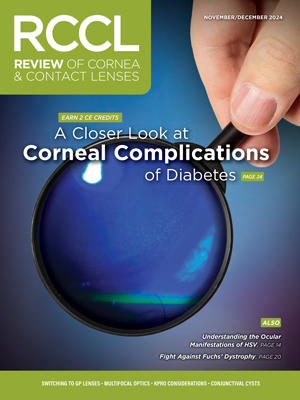| A fungal keratitis case in the setting of a corneal transplant. Notice the purulent infiltrate along the margins of the cornea, as well as marked conjunctival hyperemia. Photo: Marc B. Abelson, MD. |
Natamycin may be better than voriconazole for topical treatment of filamentous fungal keratitis, according to new research presented by N. Venkatesh Prajna, DO, chief of the cornea clinic at Aravind Eye Hospital in Madurai, India, in his presentation at the 2014 American Academy of Ophthalmology meeting.
A double-masked multicenter randomized clinical trial compared the efficacy of antifungal medications voriconazole and natamycin in the treatment of filamentous fungal keratitis. Fusarium was the most common organism detected (40% of patients), followed by Aspergillus (17%).
Of the 323 subjects, 161 were treated with 1% voriconazole and 162 were treated with 5% natamycin. The topial drugs were applied topically every hour during waking hours until re-epithelialization, then four times per day for three weeks.
Eyes that received natamycin therapy displayed better visual acuity at three months and were less likely to have perforation or require penetrating therapeutic keratoplasty. This trend was more pronounced in Fusarium cases.
The results of this research suggest that natamycin is the better single-agent treatment for filamentous fungal keratitis when compared to voriconazole; in fact, “monotherapy with topical voriconazole cannot be recommended for filamentary fungal keratitis,” Dr. Prajna concluded.
The researchers note individual susceptibility exists for fungal organisms, much as it does for bacteria, so therapy should be tailored accordingly. Also, “keep in mind there are penetration issues initially and toxicity concerns with prolonged therapy required in mycotic infection,” said Joseph Shovlin, OD, who was not involved in the research. “In recalcitrant cases, subconjunctival injections of fluconazole and intrastromal injections of amphotericin B are helpful.”


